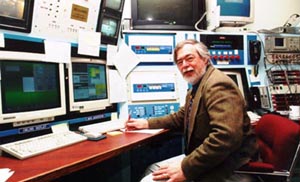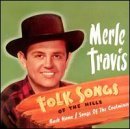|
Dark as a Dungeon- by Dr. Don Geesaman, (Tune: "Dark as a Dungeon",
Click here to see a video
clip of Don Geesaman singing this song Come all you bright
students so young and so fine (Chorus) For it's
dark as a dungeon, and damp as the dew There's many a
man I've known in my day (Chorus) For it's
dark as a dungeon, and damp as the dew When the textbooks
are written and the ages do pass (Chorus) For it's
dark as a dungeon, and damp as the dew About 10 trillion (i.e. 1013)
neutrinos are passing through your hand each second! These sub-atomic
particles are emitted by the sun as part of the nuclear reactions
that produce the sun's light and heat. They interact only very
weakly with matter, which is why you're not aware of all the neutrinos
passing through you. To detect them, physicists have constructed
"neutrino observatories" far underground, where they
are completely shielded from annoyances caused by high-energy
cosmic rays. The neutrinos can easily pass through miles of earth.
However, because there are so very many of them, even a tiny chance
of interaction does result in occasional detectable events, resulting
in a tiny flash of light that registers on an array of photomultiplier
tubes, or in a transmutation of one type of nucleus into another,
which can then be detected chemically. This song is
about all the physicists who have worked in these underground
observatories, and especially the discovery in 2001 at the Sudbury
Neutrino Observatory (SNO) of the solution to the "solar
neutrino problem". Briefly, the number of neutrinos emitted
by the sun appeared to be a factor of 2-3 lower than predicted
by the theory for the nuclear reactions powering the sun; this
theory was championed by John Bahcall (mentioned in the next-to-last
verse). As shown by the SNO experiments, neutrinos can oscillate
from one flavor to another, showing that they have a non-zero
mass. The early observatories could only detect a single flavor,
resulting in the low count. For their roles in the whole history
of neutrino detection, Ray Davis, Jr. and Masotoshi Koshiba received
the Nobel
Prize in 2002, as referred to in the last verse. Background image: Part
of the Photomultiplier tube array at the Sudbury Neutrino Observatory Suggest additional or better links .. Return to PhysicsSongs.org homepage |

